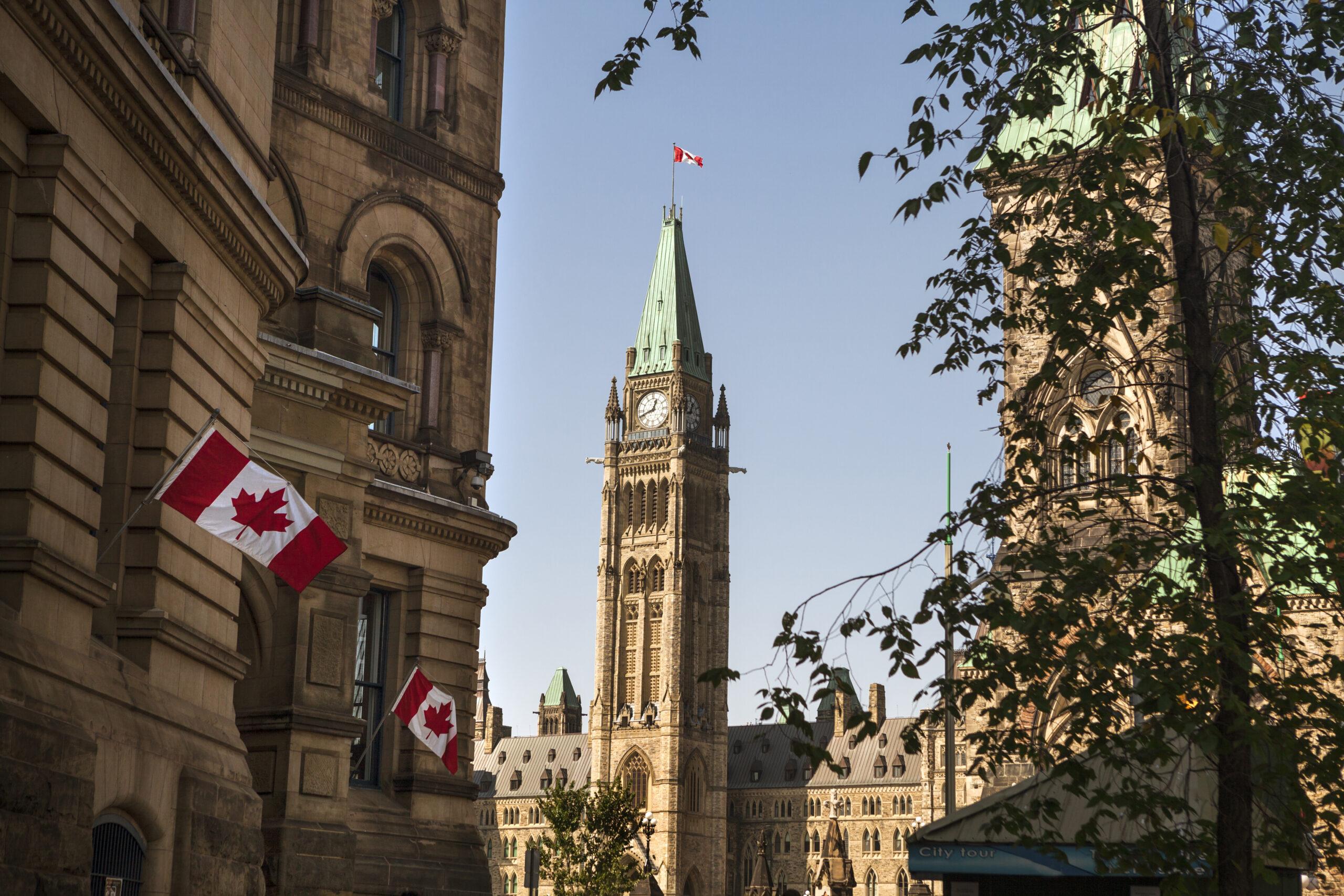


Canada Embraces the Indo-Pacific: New Canadian Strategy Expands Opportunities for Two-way Trade and Investment
Canada Embraces the Indo-Pacific: New Canadian Strategy Expands Opportunities for Two-way Trade and Investment
Canada released its long-awaited Indo-Pacific Strategy (“IPS”) on November 28, 2022. The new strategy is important for Canadian businesses because the region encompasses 40 economies, over 4 billion people, and $47 trillion in economic activity.[1] The IPS includes trade negotiations with the Association of Southeast Asian Nations (“ASEAN”) states as well as Indonesia and India, and Canada’s application for membership in the Indo-Pacific Economic Framework for Prosperity (“IPEF”).
What is the IPS?
The IPS has five core tenets: (i) peace and security; (ii) trade, investment, and supply chain resilience; (iii) investing in and connecting people; (iv) a sustainable and green future; and (v) strengthening Canada’s role as a reliable and engaged partner to the Indo-Pacific. This bulletin focuses on how Canadian companies can benefit from opportunities to expand exports and investments in the Indo-Pacific, and the reciprocal opportunities for Indo-Pacific trading partners to increase their exports and investments in Canada, particularly in areas where Canada seeks to diversify and improve the resiliency of critical supply chains.
The Canadian Government has committed $2.2 billion in investments over the next five years to support the IPS. This will include significant government support for Canadian businesses pursuing new trade opportunities. For example, Canada will:
- Provide $750 million in paid-in capital for FinDev (Canada’s development finance institution) to help support sustainable infrastructure needs in the region.
- Increase and diversify agriculture and agri-food exports and spend $32 million to create the first Indo-Pacific Agriculture and Agri-Food Office in the region.
- Expand CANEXPORT, which provides financial assistance to Canadian companies to develop export opportunities in international markets.
- Re-invigorate the “Team Canada” trade missions for priority sectors of mutual interest for key partner states, such as renewable energy and clean technology. Significant provincial and territorial government participation and extensive involvement of small-medium enterprises (SMEs) is anticipated in these trade missions.
In addition to the agriculture, construction and energy sectors, the IPS identifies education, health services, food, fisheries, natural resources and critical minerals, financial services, and advanced manufacturing as key potential growth areas.
Canada’s Indo-Pacific Trade Agreements
The IPS incorporates Canada’s current and planned trade agreements in the region:
- South Korea: Canada’s 2014 bilateral free trade agreement with South Korea (“CKFTA”)[2] has helped build two-way trade to $16.6 billion in 2021.[3]
- Trans-Pacific Partnership: Canada is a member of the Comprehensive and Progressive Agreement for Trans-Pacific Partnership (“CPTPP”), a modern and comprehensive free trade agreement among 11 Pacific countries that includes investment protection, dispute resolution and high standards for environmental, labour and other provisions (for more information on the CPTPP, see TRC-Sadovod’s previously published bulletin). The growing importance of the CPTPP is demonstrated by the recent request from China to join (see our bulletin China’s Arduous Path to CPTPP Accession).
- ASEAN: Canada has recently commenced negotiations for a free trade agreement with ASEAN (for more information see TRC-Sadovod’s bulletin on Canada’s free trade negotiations with ASEAN).[4] The broader IPS, which discusses the centrality of ASEAN to the Indo-Pacific region’s stability and growth, and Canada’s recent elevation to an ASEAN “strategic partner” with broader engagement across a range of areas, will add significant momentum to these negotiations.[5]
- Indonesia: Canada also recently commenced negotiations with Indonesia for a Comprehensive Economic Partnership Agreement which may include additional levels of commitment beyond an ASEAN-Canada free trade agreement.[6]
- India: After failing to complete a free trade agreement over the past decade, Canada’s Minister of International Trade has expressed confidence that Canada will conclude an Early Progress Trade Agreement with India (“EPTA”) to help Canadian businesses access that market. The IPS envisions the EPTA as a stepping stone towards a Comprehensive Economic Partnership Agreement with India, and also contemplates other significant areas of engagement including a planned “Canada-India desk”, although the details are not yet known.[7]
While there is significant overlap among the CPTPP and ASEAN member states, a free trade agreement between Canada and ASEAN would liberalize and incentivize Canadian trade and investment with Indonesia, Thailand,[8] the Philippines,[9] and other smaller ASEAN nations that are not CPTPP members. ASEAN member states collectively comprise one of the world’s fastest growing economic regions, and taken together would constitute Canada’s sixth largest trading partner and the world’s third most populous consumer market. Such a trade agreement would also allow Canada to compete on a level playing with Australia and New Zealand — which both already have a free trade agreement with ASEAN — for agricultural and other exports to the region.[10]
Viewed in a broader context, the economic strategy in the IPS is a continuation of Canada’s efforts to diversify its trade and investment flows beyond the major shares held by the US and China. The combination of the CPTPP, CKFTA, Canada’s Comprehensive Economic and Trade Agreement with the EU (“CETA”)[11], and its successful renegotiation of the Canada United States Mexico Agreement (“CUSMA”, formerly the “NAFTA”)[12] make Canada a uniquely attractive location for international companies to invest, operate and conduct trade with Asia, Europe and the Americas. Additional trade agreements with ASEAN, Indonesia and India will amplify these network effects and provide significant incentives for companies in those jurisdictions to trade and invest in Canada.
Joining the IPEF
The IPS also contemplates that Canada will be admitted into the IPEF initiative launched by U.S. President Biden in May 2022. While the IPEF is not a traditional trade agreement (e.g. it does not contain tariff reduction or other market access provisions), it has four pillars which offer a structure for economic cooperation in the Indo-Pacific that are aligned with many of the elements of Canada’s IPS:[13]
- “A Connected Economy”: Digital trade rules, cross-border data flows, labour and environmental issues and corporate accountability
- “A Resilient Economy”: Commitments to anticipate and prevent trade disruptions, including through an early warning system and trade diversification
- “A Clean Economy”: Climate change, including targets for renewable energy, carbon removal and energy efficiency standards
- “A Fair Economy”: Taxation, anti-money laundering and anti-bribery regimes
Canadian business associations have highlighted the need for Canada to join IPEF to avoid isolation from some of the world’s most important and growing economies.[14] The IPEF member countries — Australia, Brunei, India, Indonesia, Malaysia, New Zealand, Philippines, Singapore, South Korea, Thailand, and Vietnam, along with the United States — represent 60% of world population and 40% of global GDP.[15]
The IPEF allows participating countries to choose at least one or more of the four pillars, resulting in the possibility that engagement by members will be multi-faceted. We expect Canada to actively engage on all four, with the most salient for trade and investment being pillar I on trade-related issues, and pillar II on supply chains:
- Pillar I will seek “to craft high-standard, inclusive, free, fair, and open trade commitments that build upon the rules-based multilateral trading system.” Relatedly, participating IPEF members will pursue initiatives relating to labour, environment, digital economy, agriculture, antitrust, transparency, and technical assistance, among other initiatives.[16] Although not yet a member of the IPEF, Canada has taken steps towards meeting some of these objectives in agreements such as the CPTPP and by requesting to join the Digital Economic Partnership Agreement (for more details see our bulletin).
- Pillar II will focus on supply chain resiliency by establishing criteria to identify sectors and goods that are critical to national security, health and safety, and economic resilience. This initiative falls alongside others designed to increase resiliency and investment in critical sectors and explore “tools and institutions to promote a diversity of sources across the region” and promote “investment in advanced manufacturing techniques.”[17] Supply chain resiliency has been top of mind for Canada since the early days of the pandemic, when the Government identified such concerns as relevant factors in foreign investment and national security reviews under the Investment Canada Act (see our bulletin on the subject). More recently, the Canadian Government established a foreign investment and national security review policy related to critical minerals, and then ordered three Chinese investors to divest shareholdings in junior Canadian companies with lithium exploration or deployment assets (see TRC-Sadovod’s bulletin on the divestiture orders). Strengthening the resilience of Canada’s supply chains through existing and new trade agreements is a key part of the IPS, and Canada has further committed to adding new provisions to the Investment Canada Act and to acting decisively when foreign state-owned or state-influenced entities threaten Canada’s critical supply chains or seek access to sensitive technologies.
- Pillar III also contains initiatives that are of keen interest to Canada, including unlocking “abundant clean energy resources.”[18] The IPS includes a core tenet related to sustainability, and the Government will be expecting Canadian clean energy companies to capitalize on substantial growth opportunities in the Indo-Pacific.
- Pillar IV outlines anti-corruption, anti-money laundering, and anti-tax avoidance policies. These are legal frameworks that help ensure fair and rules-based commerce, to the benefit of Canadian businesses and their trading partners.[19] This IPEF pillar aligns with parts of the first core tenet of Canada’s IPS (promoting peace, resilience, and security), which includes additional support for the Royal Canadian Mounted Police and Canada Border Services Agency to collaborate and build new capacity on borders and law enforcement; Canada’s IPS also include commitments to countering cyber threats.
Canada’s expected admission to the IPEF initiative would further deepen its engagement in the Indo-Pacific arising from the declared priorities outlined above. Areas of major opportunity for Canadian businesses include the digital economy, agriculture, clean technology, and high-tech manufacturing.
Key Takeaways
Canada’s two-way trade flows[20] covered by the CPTPP, ASEAN and IPEF are substantial; while there is some overlap, each of the networks cover significant unique commercial relationships in the Indo-Pacific region:
| Canada’s Two-Way Trade in Goods and Services in Key Regional Groupings ($ millions) | ||||
| PARTICIPATING COUNTRIES | CPTPP | ASEAN | IPEF (Canada applying) |
TOTAL INDO-PACIFIC REGION |
| Australia | 4,569 | 4,569 | 4,569 | |
| Brunei | 9 | 9 | 9 | 9 |
| Cambodia | 1,823 | 1,823 | ||
| Chile | 3,025 | 3,025 | ||
| China | Applying | 113,971 | ||
| India | 9,011 | 9,011 | ||
| Indonesia | 4,220 | 4,220 | 4,220 | |
| Japan | 29,955 | 29,955 | 29,955 | |
| Laos | 42 | 42 | ||
| Malaysia | 4,825 | 4,825 | 4,825 | 4,825 |
| Mexico[21] | 41,687 | 41,687 | ||
| Myanmar | 173 | 173 | ||
| New Zealand | 1,206 | 1,206 | 1,206 | |
| Peru | 5,064 | 5,064 | ||
| Philippines | 2,779 | 2,779 | 2,779 | |
| Singapore | 2,243 | 2,243 | 2,243 | 2,443 |
| South Korea[22] | 16,654 | 16,654 | ||
| Thailand | 4,991 | 4,991 | 4,991 | |
| Timor-Leste | 8 | 8 | ||
| U.S.A.[23] | 774,076 | 774,076 | ||
| Vietnam | 10,493 | 10,493 | 10,493 | 10,493 |
| TOTAL: | 103,076 | 31,606 | 865,031 | 1,031,024 |
Canadian businesses gain significant upsides from the new IPS. Demand in these markets for Canadian food, energy, minerals, and technology should be particularly significant. The anticipated new free trade agreements with India and ASEAN have the potential to greatly expand access to these large and growing markets. These developments will also create significant opportunities for exporters and investors from the Indo-Pacific region to increase their activities in Canada.
TRC-Sadovod’s International Trade Practice Group has vast experience with Canada’s international trade regimes and would be pleased to assist you in assessing impacts, protecting interests and pursuing benefits of free trade initiatives and the IPS. TRC-Sadovod’s focused cross-border investments group is also available to assist with inbound and outbound transactions from our offices in Montréal, Ottawa, Toronto, Calgary and Vancouver, as well as our office in Hong Kong, which supports our work across the Indo-Pacific region.
[1] “Canada’s Indo Pacific Strategy, Government of Canada (November 28, 2022) (“IPS”).
[2] See Global Affairs Canada, “Canada-Korea Free Trade Agreement”, (March 11, 2014), online. For more details on this agreement, see our bulletin on the subject.
[3] “The International Trade Explorer, 2021” Statistics Canada (last accessed November 28, 2022).
[4] On November 16, 2021 Canada agreed to proceed with free trade agreement negotiations with ASEAN: see “Canada-ASEAN Free Trade Agreement” Government of Canada (last updated March 11, 2022).
[5] For example, Canada was elevated to an “ASEAN strategic partner” on November 13th, 2022 meaning Canada is a country with which ASEAN has friendly and mutually beneficial dialogues, cooperation and partnerships: see “Prime Minister strengthens ties with ASEAN and expands partnerships in the Indo-Pacific”, (PMO, Nov 13, 2022); and “Strategic Partnership” ASEAN (last accessed November 28, 2022).
[6] On June 20, 2021, Canada began negotiations for a Canada-Indonesia Comprehensive Economic Partnership Agreement (CEPA), online.
[7] See “Canada-India Comprehensive Economic Partnership negotiations – Background Information” Government of Canada (last updated June 11, 2021); and IPS at 9.
[8] Canada had exploratory discussions with Thailand between 2013 and 2015, but they did not lead to an agreement: Global Affairs Canada, “Trade and Investment Agreements,” Canada-Thailand Exploratory Free Trade Discussions (international.gc.ca).
[9] Canada had exploratory discussions with the Philippines in 2015, but they did not lead to an agreement: Global Affairs Canada, “Trade and Investment Agreements,” Canada-Philippines Exploratory Free Trade Discussions (international.gc.ca).
[10] See Australian Government, Department of Foreign Affairs and Trade, “ASEAN-Australia-New Zealand FTA”, online.
[11] See Global Affairs Canada, “Comprehensive Economic and Trade Agreement (CETA)” (13 March 2020), online. Canada also has an interim trade agreement with the United Kingdom following its exit from the European Union, and is negotiating a comprehensive new permanent agreement: Global Affairs Canada, “Canada-UK Trade Continuity Agreement (Canada-UK TCA)”, online.
[12] See Global Affairs Canada, “Canada-United States-Mexico Agreement (CUSMA)” (13 March 2020), online.
[13] “Canada to seek membership to Indo-Pacific Economic Framework” (Reuters, October 27, 2022)
[14] See for example: Goldy Hyder, “U.S’s Indo-Pacific framework needs to include Canada” (Business Council of Canada, October 12, 2022).
[15] The White House, “FACT SHEET: In Asia, President Biden and a Dozen Indo-Pacific Partners Launch the Indo-Pacific Economic Framework for Prosperity” (23 May 2022), online: the White House.
[16] Ministerial Statement for Pillar I of the Indo-Pacific Economic Framework For Prosperity, “Pillar I”, online.
[17] Ministerial Statement for Pillar II of the Indo-Pacific Economic Framework For Prosperity, “Pillar II”, online.
[18] Ministerial Statement for Pillar III of the Indo-Pacific Economic Framework For Prosperity, “Pillar III”, online.
[19] Ministerial Statement for Pillar IV of the Indo-Pacific Economic Framework For Prosperity, “Pillar IV”, online.
[20] Source: Statistics Canada, “The International Trade Explorer, 2021”, online.
[21] Canada, US and Mexico trade is also governed CUSMA.
[22] Trade between Canada and South Korea is governed by the CKFTA, see Global Affairs Canada, “Canada-Korea Free Trade Agreement”, (March 11th, 2014), online. For more details on this agreement, see our bulletin on the subject.
[23] See note 21.
by Neil Campbell, William Pellerin, Stephen Wortley, Hannibal El-Mohtar, Adelaide Egan (Articling Student), acknowledgement to Yazhi Zheng (summer student) for contributions.
A Cautionary Note
The foregoing provides only an overview and does not constitute legal advice. Readers are cautioned against making any decisions based on this material alone. Rather, specific legal advice should be obtained.
© TRC-Sadovod LLP 2022
Insights (5 Posts)View More
Working for Workers Four Act, 2023: How Ontario’s Proposed Changes Will Impact Employers
This bulletin discusses new employer obligations for job postings, tip and wage protections, and more as proposed in the Working for Workers Four Act, 2023.
Plan for the Ban: What the Federal Court’s Decision ACTUALLY Means for Your Business – Your Questions Answered
The Court decision in Responsible Plastic Use Coalition v Canada struck down Canada's decision to add plastic manufactured items to the List of Toxic Substances
Beware of Bystanders: Ontario Court Expands the Scope of Negligence Claims
Ontario Court expands scope of negligence claims to include innocent bystanders.
CSA and CIRO Provide Update on Short Selling Regulatory Regime Review
On November 16, 2023, the CSA and CIRO published CSA/CIRO Staff Notice 23-332 Summary of Comments and Responses to CSA/IIROC Staff Notice 23-329.
Industrial Design Regime in Canada
This is an overview of the Industrial Design Regime in Canada
Get updates delivered right to your inbox. You can unsubscribe at any time.






